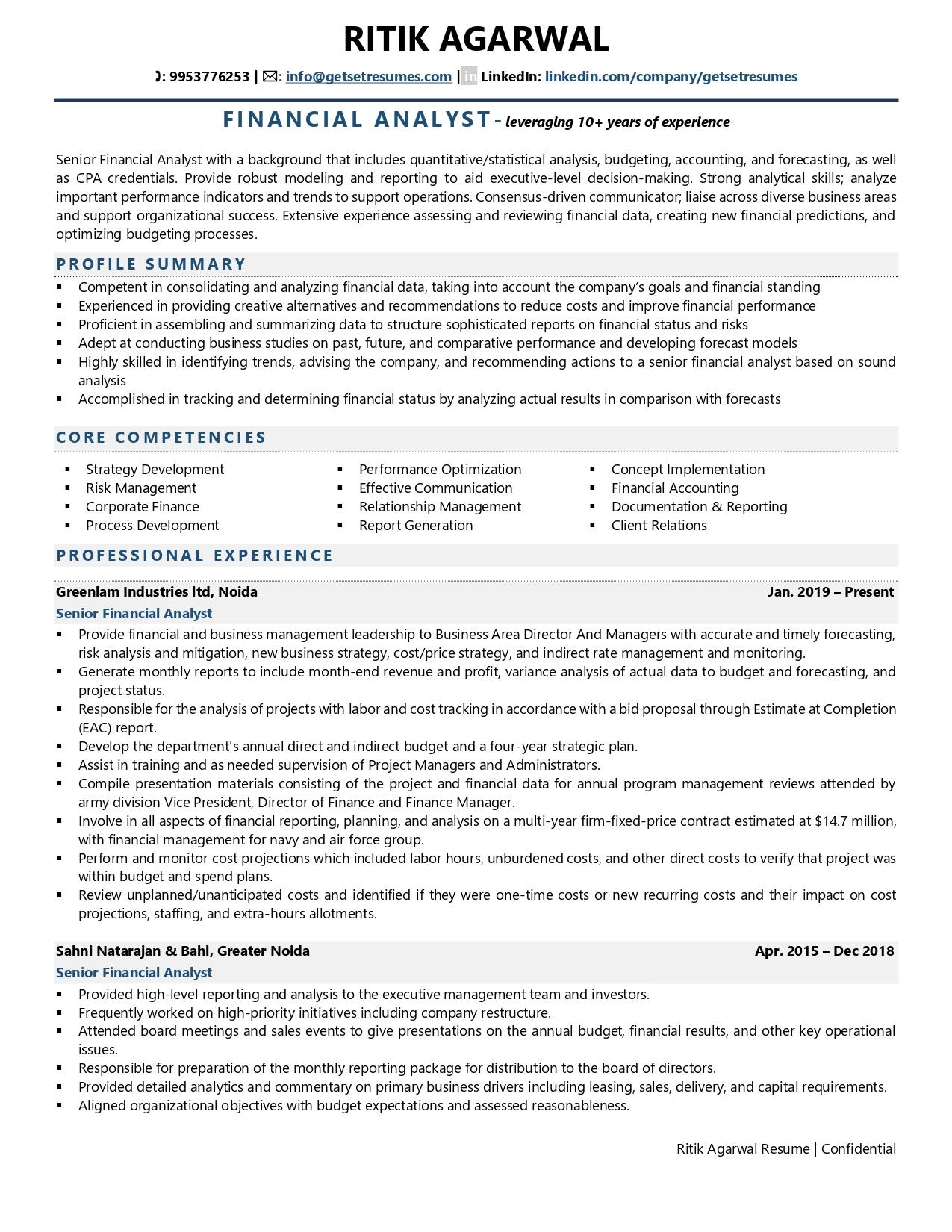
How to Create a Financial Business Analyst Resume
Creating a Financial Business Analyst resume requires a strategic approach to showcase your analytical skills, financial expertise, and ability to contribute to an organization’s financial health. Below is a step-by-step guide to help you craft an effective resume that highlights your qualifications and sets you apart from other candidates.
Step 1: Choose the Right Format
1. Chronological Format
– Best for candidates with a solid work history in finance.
– Lists your work experience in reverse chronological order, starting with the most recent job.
2. Functional Format
– Suitable for candidates with gaps in employment or those transitioning into finance from another field.
– Focuses on skills and achievements rather than work history.
3. Combination Format
– Ideal for candidates with a mix of experience and strong skill sets.
– Highlights both work history and key skills.
Step 2: Start with a Professional Summary
Write a concise summary at the beginning of your resume that highlights your key qualifications, experience, and what you bring to the role. For example:
“Experienced Financial Business Analyst with over 5 years of expertise in financial modeling, data analysis, and strategic planning. Proven track record of driving business performance through insightful financial analysis and process optimization.”
Step 3: Highlight Key Skills
Include a section that lists your core competencies relevant to the role. Examples of key skills include:
– Financial Modeling
– Data Analysis
– Budgeting and Forecasting
– Risk Management
– Process Improvement
– Stakeholder Collaboration
– Financial Reporting
Step 4: Detail Your Work Experience
List your work experience in reverse chronological order, including your job title, company name, location, and dates of employment. Use bullet points to describe your responsibilities and achievements. Focus on quantifiable results and use action verbs. For example:
**Financial Business Analyst**
*ABC Corporation, New York, NY*
*January 2019 – Present*
– Analyzed financial data to identify trends, resulting in a 10% increase in revenue.
– Developed financial models to support strategic decision-making, improving forecast accuracy by 15%.
– Collaborated with cross-functional teams to optimize budgeting processes, reducing operational costs by 12%.
Step 5: Include Education and Certifications
List your educational background and any relevant certifications. Include the degree, institution name, and graduation date. Relevant certifications can include:
– CFA (Chartered Financial Analyst)
– CPA (Certified Public Accountant)
– Master’s Degree in Finance, Accounting, or Economics
Step 6: Add Additional Sections (Optional)
Consider adding the following sections if they add value to your resume:
– **Professional Affiliations:** Memberships in financial or business organizations.
– **Technical Skills:** Proficiency in financial software like SAP, Excel, Tableau, or SQL.
– **Languages:** Fluency in additional languages, if relevant.
– **Awards and Honors:** Recognition received for your work in finance.
Step 7: Tailor Your Resume
Customize your resume for each job application by aligning your experience with the specific job description. Highlight the most relevant skills and achievements that match the job requirements.
Step 8: Proofread and Format
Ensure your resume is free of grammatical errors and typos. Use a clean, professional layout with consistent formatting. Keep the font size readable and use bullet points for clarity.
Conclusion
A well-crafted Financial Business Analyst resume should clearly demonstrate your ability to analyze financial data, provide strategic insights, and contribute to the company’s financial success. By following these steps, you can create a resume that effectively showcases your skills and experience, helping you stand out in a competitive job market.